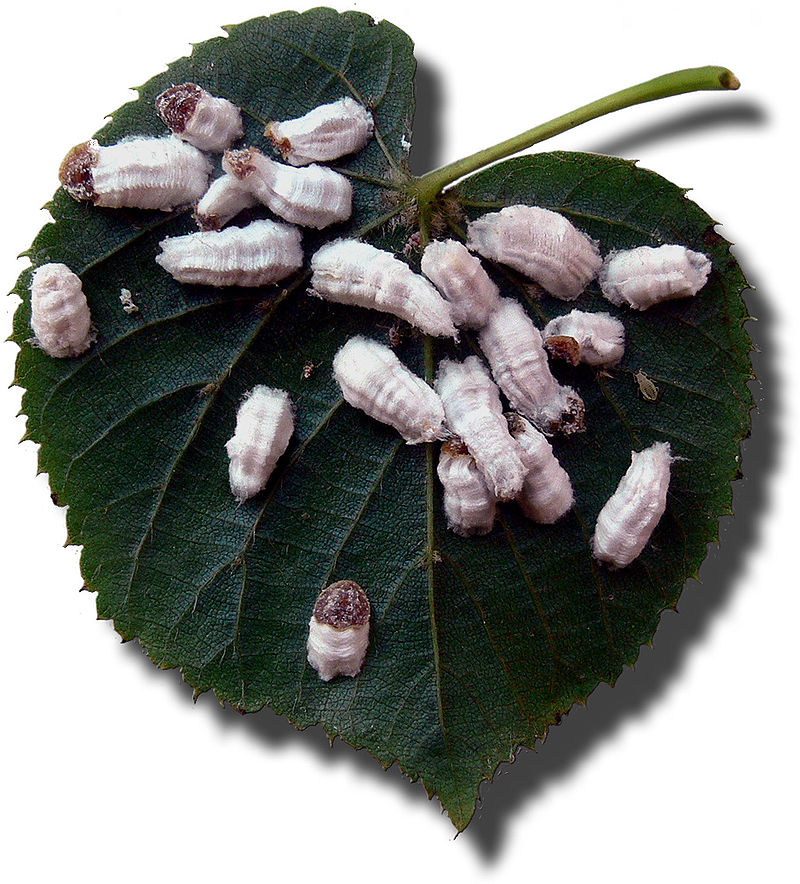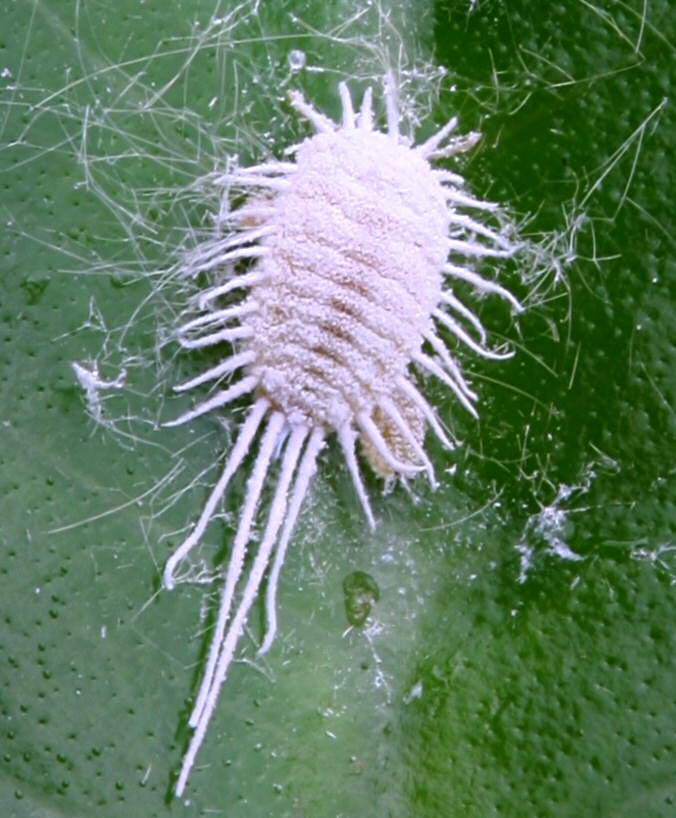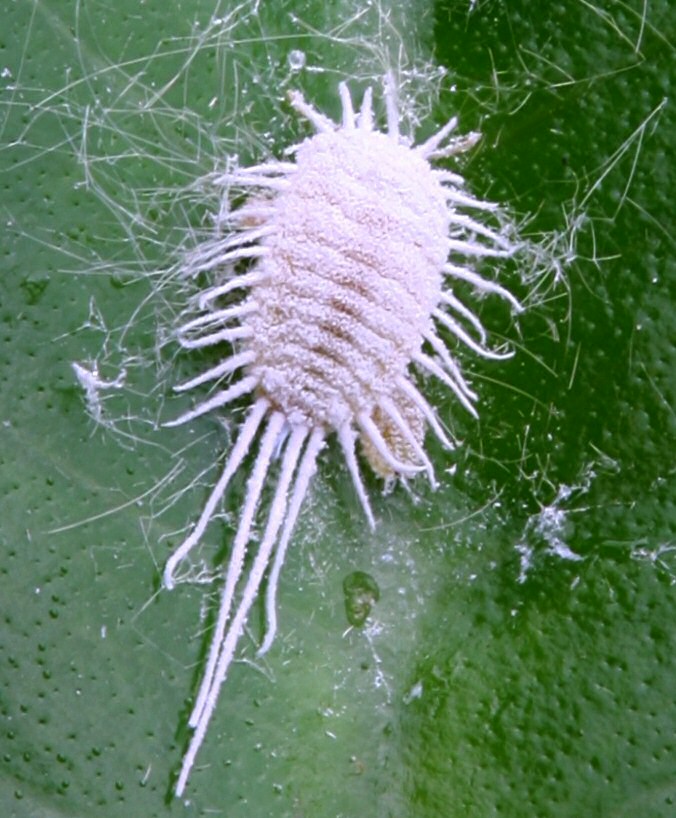- Home
- Garden Wildlife
- Insects
- Hemiptera
These photos show the Hawthorn shield bug with wings folded (left) and partly open (centre). Beetles also have hard protective forewings, but all the wing is hardened, and the two wings meet in a straight line down the back as in the image on the right.
Shieldbugs are among the largest and most easily recognised heteropteran bugs but there are many others.
Heteropteran bugs have various diets. Many suck sap from plants but some are predators of other insects, while a few, such as the bedbugs, Cimex species, suck blood from vertebrates.
There is a Facebook group for Heteroptera enthusiasts: British Terrestrial True Bugs (Heteroptera) Recording Schemes
The Auchenorrhyncha
The sub-order Auchenorrhyncha includes insects commonly known as cicadas, froghoppers, leafhoppers, planthoppers and treehoppers. All of these insects feed by sucking sap from plants. As the common names suggest, the adult insects have a habit of jumping when disturbed. In Britain we have only two species of treehoppers, neither likely to occur in gardens. There is concern growing over the bacterial disease Xylella which is spreading in Europe, and may come to Britain and Ireland. It can be spread by many xylem-feeding Auchenorrhyncha.
Hemiptera: Introduction
By Andrew Halstead reviewed by Andrew Salisbury edited by Steve Head
Nearly 2,000 species of insects in the order Hemiptera have been recorded in Britain and Ireland. The Hemiptera contains a wide range of insects of diverse forms, some of which will be familiar to (and resented by) gardeners. All of the insects in this Order have mouthparts that are adapted for sucking sap or other fluids. Hemipterans have a prominent rostrum or "beak", with mandibles and maxillae modified into piercing stylets housed within a long jointed labium. There is an excellent set of photos showing bug anatomy on the British Bugs website.
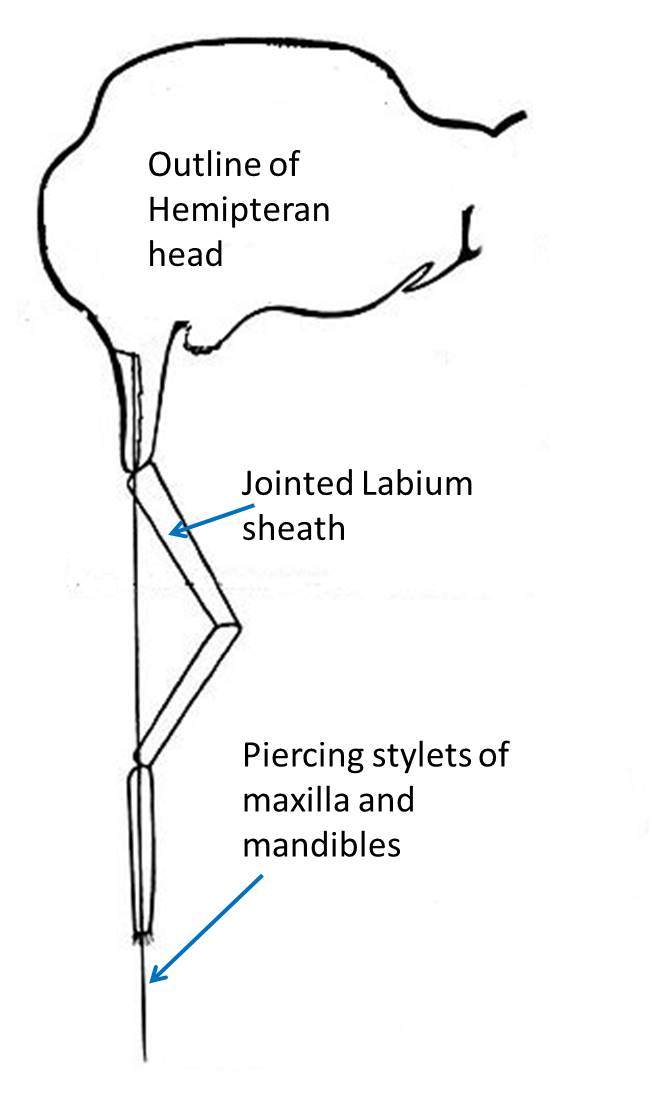
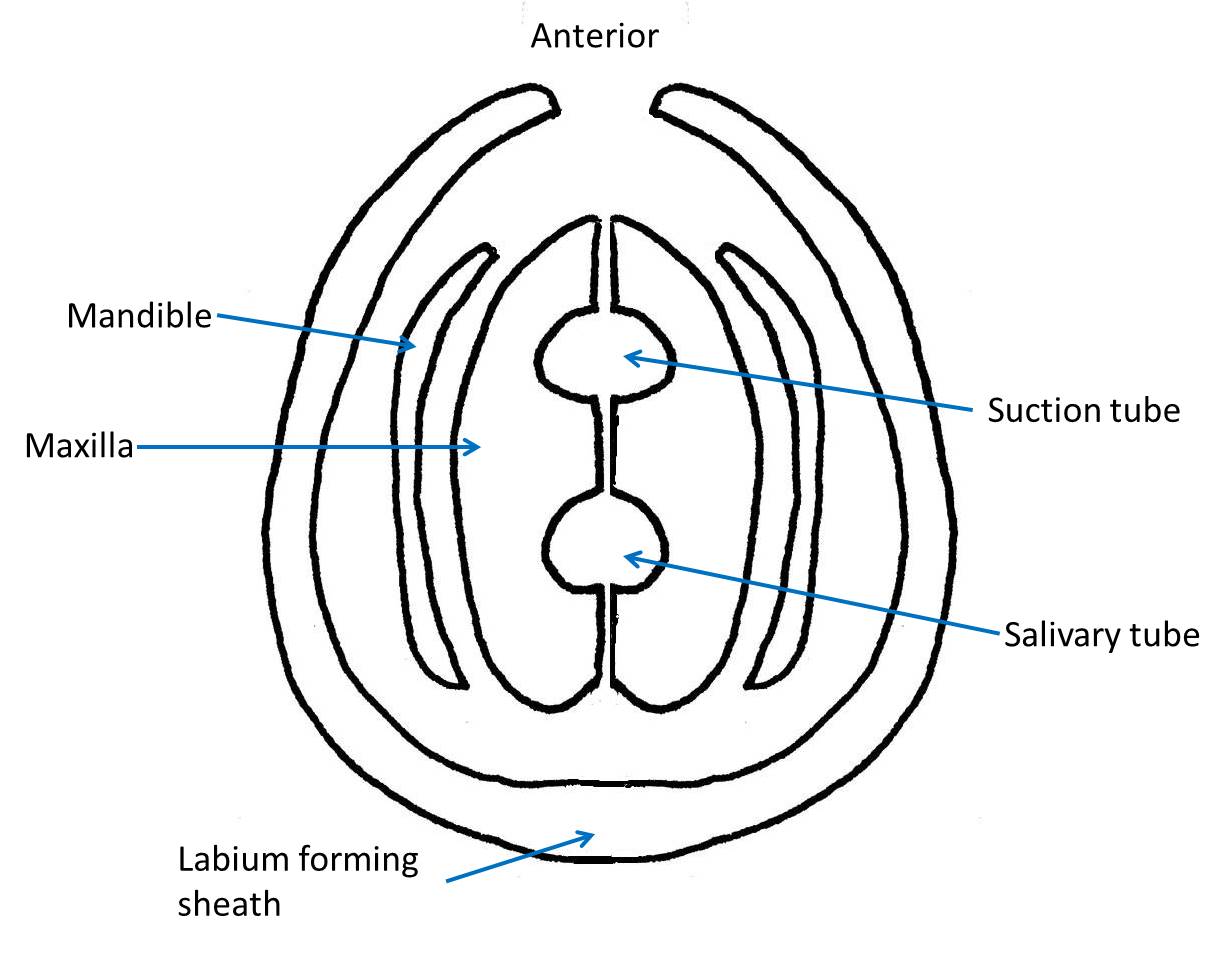
Left: The rostrum is mainly formed from the labium, which is jointed to allow it to retract as the stylets penetrate the food item. Centre: a section cut through the middle of the rostrum showing the two canals - one for sucking, one for injecting saliva, formed from the maxillae. Having the tube made from two sections means they can be separated for cleaning. On the right, front view of the head of a water boatman, with the rostrum visible between the front legs.
Hemipterans show incomplete metamorphosis in their development, with (usually) 6 nymphal instars which closely resemble the adult but lack functional wings or reproductive parts. Many are very small and include significant garden pests such as the aphids.
Jennifer Owen caught and identified 173 species of Hemiptera in her seminal study. The Hemiptera is divided into three sub-orders, the Heteroptera, the Auchenorrhyncha and the Sternorrhyncha. The last two used to be lumped together as the "Homoptera" in old text books.
The Heteroptera
The Heteroptera are often referred to as "true" bugs because many non-entomologists call all creepy crawlies "bugs". They are sometimes mistakenly identified as beetles, but the sucking mouthparts identify them as bugs.
Adult heteropterans are easily recognised. The forewings have a unique structure in that most of the forewing is thickened and usually coloured, while the tip is membranous and often colourless. This feature gave the name Hemiptera (half-wing) to the order as a whole. When the forewings are folded back over the membranous hind wings, the tips of the forewings form a diamond shape that is distinctly different from the rest of the wings.
.jpg)
![Photo: gailhampshire from Cradley, Malvern, U.K [CC BY 2.0 (https://creativecommons.org/licenses/by/2.0)]](images/800px-Hawthorn_Shield_Bug_-_Acanthosoma_haemorrhoidale._-_Flickr_-_gailhampshire_(1).jpg)
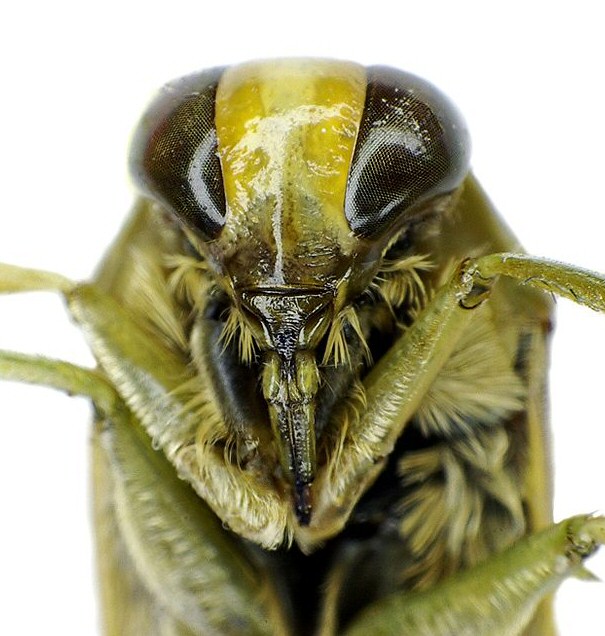
![Photo: By Udo Schmidt from Deutschland [CC BY-SA 2.0 (https://creativecommons.org/licenses/by-sa/2.0)], via Wikimedia Commons](images/Bembidion_tetracolum_Say Upright.jpg)
Representative Auchenorrhychans. Left: Froghopper Philaenus spumarius. Centre: Leafhopper Kybos populi and Right:
Planthopper Stenocranus minutus.
The Sternorrhyncha
This sub-order contains a number of small-bodied but important families, some of which (like aphids and whiteflies) are all too familiar to the gardener. All of them feed by sucking sap from plants.
Representative Sternorrhynchans:
|
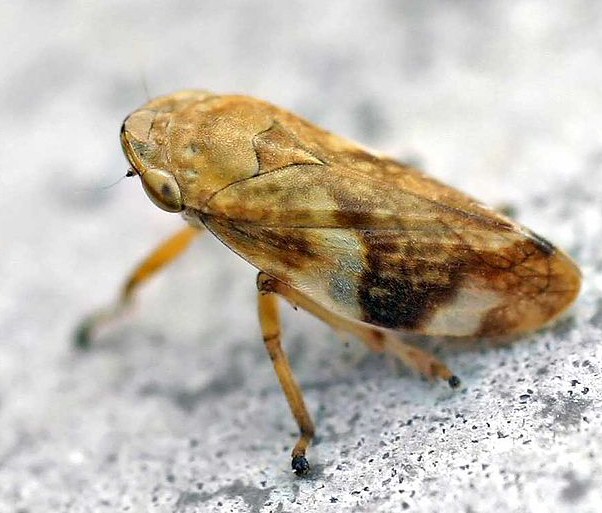
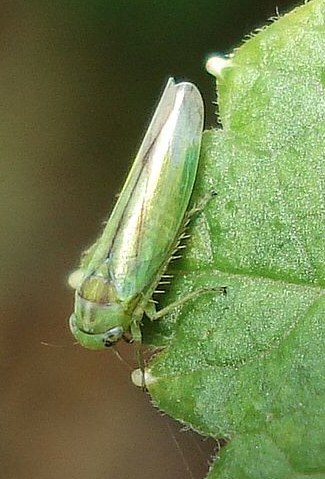
.jpg)
Other sources of information
Websites
Website of British Bugs
Hemiptera... It's a Bug's Life
UK Hemiptera Facebook group.
Jeremy Early's photographs
Books
Unwin, D. (2001) A key to families of British Bugs (Insecta: Hemiptera). A Field Studies Council AIDGAP key
Page drafted by Andrew Halstead, reviewed by Andrew Salisbury, edited by Steve Head
Typical aphid Adelgid from a conifer Alder psyllid Cabbage whitefly
Hydrangea scale insect Longtailed mealybug
Hemiptera: Introduction
By Andrew Halstead reviewed by Andrew Salisbury edited by Steve Head
Nearly 2,000 species of insects in the order Hemiptera have been recorded in Britain and Ireland. The Hemiptera contains a wide range of insects of diverse forms, some of which will be familiar to (and resented by) gardeners. All of the insects in this Order have mouthparts that are adapted for sucking sap or other fluids. Hemipterans have a prominent rostrum or "beak", with mandibles and maxillae modified into piercing stylets housed within a long jointed labium. There is an excellent set of photos showing bug anatomy on the British Bugs website.


Top Left: The rostrum is mainly formed from the labium, which is jointed to allow it to retract as the stylets penetrate the food item. Top Right: a section cut through the middle of the rostrum showing the two canals - one for sucking, one for injecting saliva, formed from the maxillae. Having the tube made from two sections means they can be separated for cleaning. On the right, front view of the head of a water boatman, with the rostrum visible between the front legs.
Hemipterans show incomplete metamorphosis in their development, with (usually) 6 nymphal instars which closely resemble the adult but lack functional wings or reproductive parts. Many are very small and include significant garden pests such as the aphids.
Jennifer Owen caught and identified 173 species of Hemiptera in her seminal study. The Hemiptera is divided into three sub-orders, the Heteroptera, the Auchenorrhyncha and the Sternorrhyncha. The last two used to be lumped together as the "Homoptera" in old text books.
Heteroptera
The Heteroptera are often referred to as "true" bugs because many non-entomologists call all creepy crawlies "bugs". They are sometimes mistakenly identified as beetles, but the sucking mouthparts identify them as bugs.
Adult heteropterans are easily recognised. The forewings have a unique structure in that most of the forewing is thickened and usually coloured, while the tip is membranous and often colourless. This feature gave the name Hemiptera (half-wing) to the order as a whole. When the forewings are folded back over the membranous hind wings, the tips of the forewings form a diamond shape that is distinctly different from the rest of the wings.
.jpg)
![Photo: By Udo Schmidt from Deutschland [CC BY-SA 2.0 (https://creativecommons.org/licenses/by-sa/2.0)], via Wikimedia Commons](images/Bembidion_tetracolum_Say Upright.jpg)
![Photo: gailhampshire from Cradley, Malvern, U.K [CC BY 2.0 (https://creativecommons.org/licenses/by/2.0)]](images/800px-Hawthorn_Shield_Bug_-_Acanthosoma_haemorrhoidale._-_Flickr_-_gailhampshire_(1).jpg)
These photos show the Hawthorn shield bug with wings folded (left) and partly open (centre). Beetles also have hard protective forewings, but all the wing is hardened, and the two wings meet in a straight line down the back as in the image on the right.
Shieldbugs are among the largest and most easily recognised heteropteran bugs but there are many others.
Heteropteran bugs have various diets. Many suck sap from plants but some are predators of other insects, while a few, such as the bedbugs, Cimex species, suck blood from vertebrates.
There is a Facebook group for Heteroptera enthusiasts: British Terrestrial True Bugs (Heteroptera) Recording Schemes
The Auchenorrhyncha
The sub-order Auchenorrhyncha includes insects commonly known as cicadas, froghoppers, leafhoppers, planthoppers and treehoppers. All of these insects feed by sucking sap from plants. As the common names suggest, the adult insects have a habit of jumping when disturbed. In Britain we have only two species of treehoppers, neither likely to occur in gardens.

.jpg)
These photos show the Hawthorn shield bug with wings folded (left) and partly open (centre). Beetles also have hard protective forewings, but all the wing is hardened, and the two wings meet in a straight line down the back as in the image on the right.
Shieldbugs are among the largest and most easily recognised heteropteran bugs but there are many others.
Heteropteran bugs have various diets. Many suck sap from plants but some are predators of other insects, while a few, such as the bedbugs, Cimex species, suck blood from vertebrates.
There is a Facebook group for Heteroptera enthusiasts: British Terrestrial True Bugs (Heteroptera) Recording Schemes
The Auchenorrhyncha
The sub-order Auchenorrhyncha includes insects commonly known as cicadas, froghoppers, leafhoppers, planthoppers and treehoppers. All of these insects feed by sucking sap from plants. As the common names suggest, the adult insects have a habit of jumping when disturbed. In Britain we have only two species of treehoppers, neither likely to occur in gardens.
These photos show the Hawthorn shield bug with wings folded (left) and partly open (centre). Beetles also have hard protective forewings, but all the wing is hardened, and the two wings meet in a straight line down the back as in the image on the right.
Shieldbugs are among the largest and most easily recognised heteropteran bugs but there are many others.
Heteropteran bugs have various diets. Many suck sap from plants but some are predators of other insects, while a few, such as the bedbugs, Cimex species, suck blood from vertebrates.
There is a Facebook group for Heteroptera enthusiasts: British Terrestrial True Bugs (Heteroptera) Recording Schemes
The Auchenorrhyncha
The sub-order Auchenorrhyncha includes insects commonly known as cicadas, froghoppers, leafhoppers, planthoppers and treehoppers. All of these insects feed by sucking sap from plants. As the common names suggest, the adult insects have a habit of jumping when disturbed. In Britain we have only two species of treehoppers, neither likely to occur in gardens. There is concern growing over the bacterial disease Xylella which is spreading in Europe, and may come to Britain and Ireland. It can be spread by many xylem-feeding Auchenorrhyncha.

Representative Auchenorrhychans. Left: Froghopper Philaenus spumarius. Centre: Leafhopper Kybos populi and Right: Planthopper Stenocranus minutus.
The Sternorrhyncha
This sub-order contains a number of small-bodied but important families, some of which (like aphids and whiteflies) are all too familiar to the gardener. All of them feed by sucking sap from plants.
Representative Sternorrhynchans:
|
Typical Aphid Adelgid from a conifer Alder Psyllid
Cabbage Whitefly Hydrangea Scale insect Longtailed Mealybug
Other sources of information
Websites
Website of British Bugs
Hemiptera... It's a Bug's Life
UK Hemiptera Facebook group.
Jeremy Early's photographs
Books
Unwin, D. (2001) A key to families of British Bugs (Insecta: Hemiptera). A Field Studies Council AIDGAP key
Page drafted by Andrew Halstead, reviewed by Andrew Salisbury, edited by Steve Head



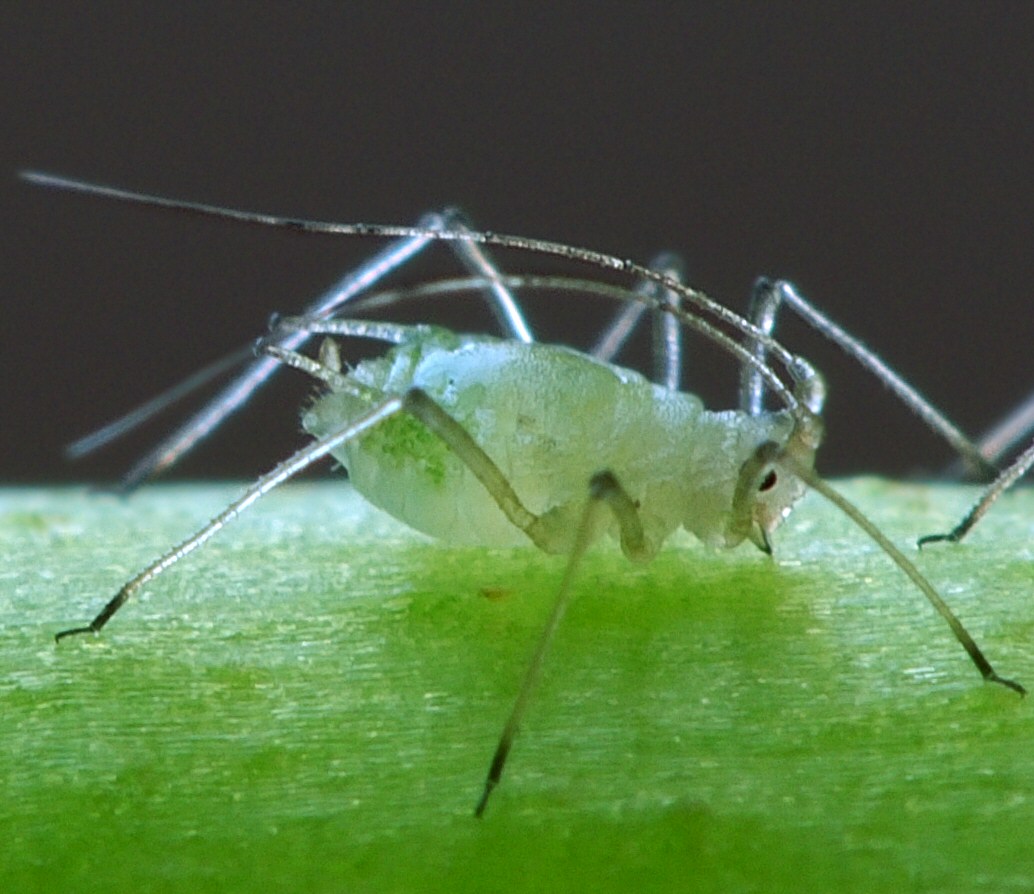
_(cropped).jpg)
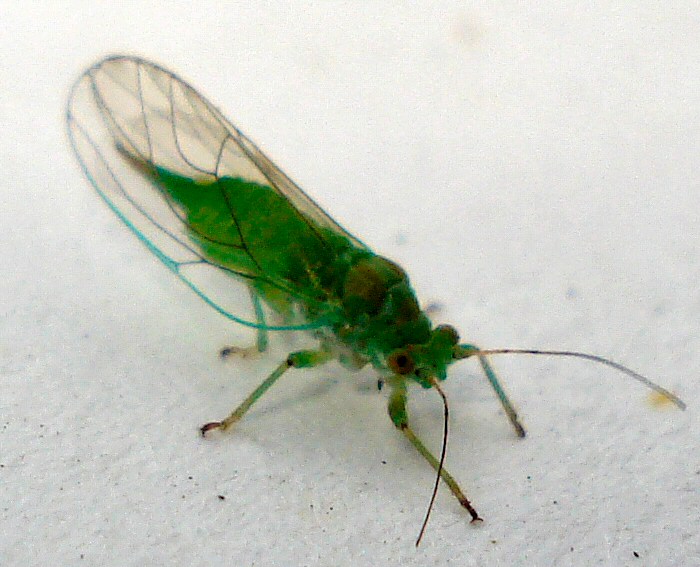
![Photo: Amada44 [CC BY-SA 4.0 (https://creativecommons.org/licenses/by-sa/4.0)]](images/800px-Cabbage_Whitefly_-_Aleyrodes_proletella_8618.jpg)
